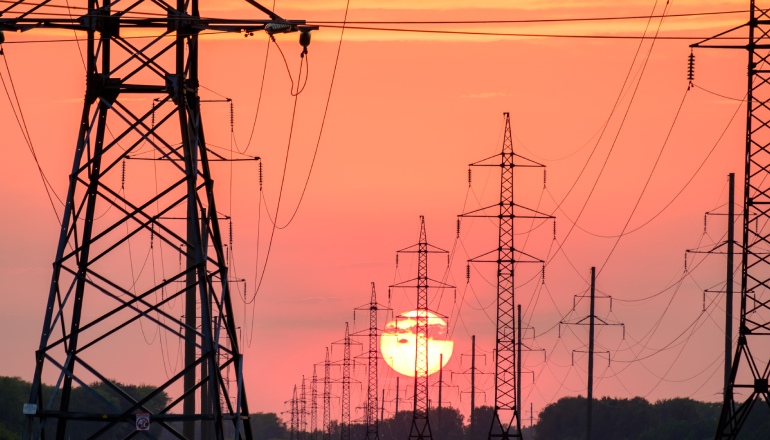The energy scenario is set to change significantly by 2030, based on today’s policy settings, says a new IEA WEO 2023 report.
By 2030, the global energy scenario will undergo significant change, according to the International Energy Agency’s World Energy Outlook (WEO) 2023 report.
Ongoing major shifts, the rise of clean energy technologies, and economic changes are causing a surge in global demand for coal, oil, and natural gas. For example, the rapid advancement of solar, wind, electric cars, and heat pumps is significantly altering the way we power our homes, factories, and vehicles. Electric cars are expected to reach nearly 10 times the number on the road, the report notes.
The India picture:
According to WEO 2023, India is expected to meet its 2030 target of having half of its electricity capacity be non-fossil well before the end of the decade.
By 2030, India’s industry will produce 30% less CO2, and 60% of two- and three-wheelers will be electric. Progress is also being made towards universal access to modern energy, with 670 million people gaining access to modern cooking fuels and 500 million to electricity.
By 2030, India’s industry will produce 30% less carbon dioxide (CO2) than it does now, and passenger cars will emit 25% less CO2 per kilometre on average. In 2030, about 60% of two- and three-wheelers sold will be electric—a ten-fold increase from the current percentage.
Global watch:
Scenario analysis:
The global population is expected to grow by 1.7 billion by 2050. Asia and Africa will be the largest sources of energy demand growth. Emerging and developing economies can achieve national energy and climate targets by implementing clean electrification, efficiency improvements, and transitioning to lower- and zero-carbon fuels.
By 2030, Indonesia’s renewable energy share of the country’s power generation will have doubled to over 35%. By the end of the decade, biofuels in Brazil will account for 40% of road transport fuel demand, up from 25% currently. In order to meet a variety of national energy and climate targets, sub-Saharan Africa must rely on renewable energy sources for 85% of newly constructed power plants by 2030.
By 2030, 670 million people will have access to modern cooking fuels and 500 million to electricity, marking significant progress towards universal energy access.
The global energy supply’s fossil fuel share is predicted to decrease from 80% to 73% by 2030. However, global energy-related carbon dioxide (CO2) emissions will peak by 2025.
5 pillars for a global strategy:
The WEO-2023 proposes a global strategy for getting the world on track by 2030 that consists of five key pillars, which can also provide the basis for a successful COP28 climate change conference.
- tripling global renewable capacity;
- doubling the rate of energy efficiency improvements;
- slashing methane emissions from fossil fuel operations by 75%;
- innovative, large-scale financing mechanisms to triple clean energy investments in emerging and developing economies;
- Measures to ensure an orderly decline in the use of fossil fuels, including an end to new approvals of unabated coal-fired power plants
Geopolitics, challenges, and impact:
The current high demand for fossil fuels is expected to hinder the Paris Agreement’s goal of limiting global temperature rise to 1.5°C. The energy system, designed for a colder world with fewer extreme weather events, is at risk of weakening due to increased heat records. The current policy configurations have significantly increased clean energy production, but the consequences of doing nothing could be catastrophic.
WEO-2023 explores energy security challenges in the Middle East, exacerbated by geopolitical tensions and the global energy crisis, aggravated by inflation and high borrowing costs. However, new LNG projects set to commence in 2025 are expected to increase capacity by over 250 billion cubic meters annually by 2030. These will account for nearly 45% of the world’s current LNG supply.
The increase in gas capacity may alleviate price and supply concerns. But it may also lead to a glut due to slowed global gas demand growth since 2010. Russia will thus have very little opportunity to increase the size of its clientele. By 2030, its proportion of gas traded internationally, which was 30% in 2021, is expected to decrease to half.
WEO-2023 also examines one significant variable for the energy markets in the upcoming years—China. China, a major player in global energy trends, is experiencing significant changes due to its slowing economy and structural changes. Its energy consumption is predicted to peak in the mid-2020s, with fossil fuel demand and emissions expected to decrease as clean energy growth accelerates.
The solar story:
The WEO predicts strong growth in solar PV this decade, with renewables contributing 80% of new power generation capacity by 2030.

